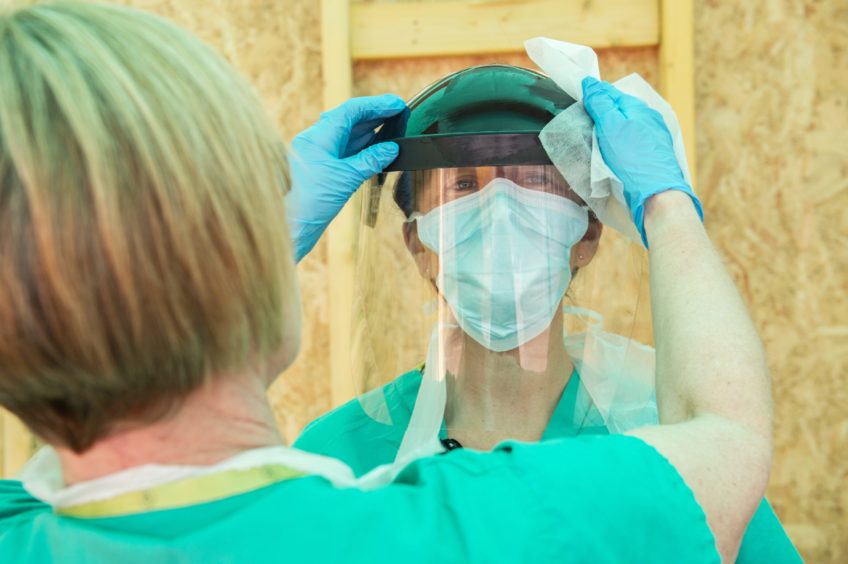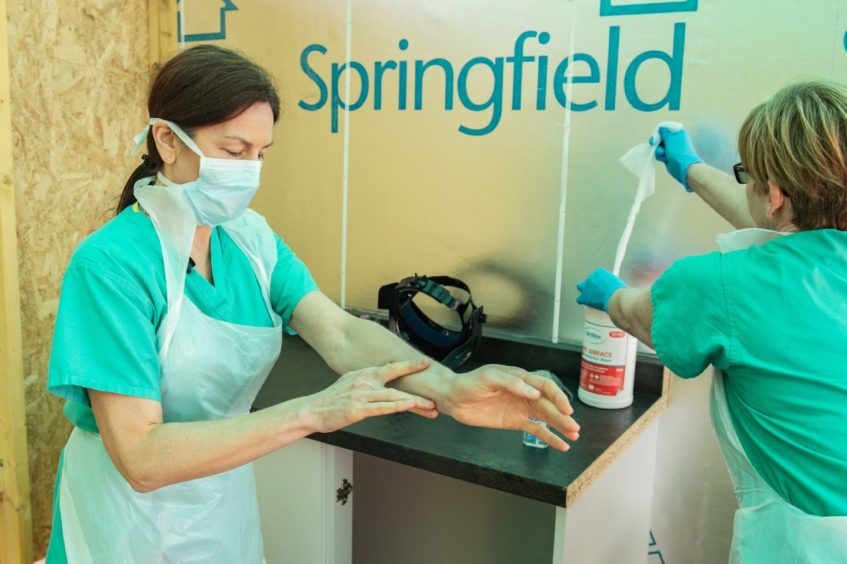A health boss has warned it would be “unwise” to lift restrictions in Moray as the area currently has positive cases five times higher than the rest of the country.
National clinical director Jason Leitch said a “few cases” of the “highly transmissible” variant have been found in Moray on Monday, which currently has the highest infection rate in Scotland.
Now Jillian Evans, head of health intelligence at NHS Grampian, has told BBC’s Good Morning Scotland that although numbers are beginning to fall the area is currently five times higher in positive cases than the rest of the country.
When asked if she believed Moray would move down a level next week, when the rest of the country is expected to, she said: “While we’ve got continued increases in cases, continued high test positivity rate, it would seem to me to be really unlikely and unwise to relax restrictions further at this point.”
Dr Evans said it was unknown how many cases of the Indian variant there have been in Moray, but the Kent variant is still proving to be the “dominant variant”.
However, outbreak management has been tasked to manage the clusters despite what type of variant is found.
She added: “This is an ever-evolving situation.
“I’d be as worried about the variant of concern, the Indian variant, being in circulation when we look at what’s happening in other parts of the UK.
“Our enhanced efforts through testing should stand us in good stead for that, but it may even have to be increased if we find that that’s a problem for us.”
How did the Indian variant reach Moray?
The health boss was quizzed on how the Indian variant of the virus managed to spread in the Moray communities.
She said she didn’t have the answer, however, added: “When we look at down south, when we look at Bedford and London, it’s been associated with travel and then into parts of the community from that.
“Of course, travel is still permitted for non-essential reasons and we know that there was a significant increase in travel before the red list came into effect.
“So, it’s possible, as we look at clusters and chains of transmission, that once it’s here then you look at the chain of transmission from that and how quickly things like this can spark and go out of control.”

Dr Evans said the Indian variant is considered to be more transmissible – “so, highly transmissible and at least as transmissible as the Kent variant. That’s a worry”.
She added: “At the moment, there isn’t sufficient evidence to say the effect that it has on severe illness, on hospitalisation. Although I believe, it may not be as significant as originally thought.
“But certainly, in terms of its transmissibility, that’s something that we’d be worried about.
“And even with the Indian variant and the Kent variant this is the first time, as Scotland, we’re unlocking with a highly transmissible variant – the Kent variant.
“Although the level has reduced from four to three in the UK, the virus is still in circulation.”
Moray community answer call to get tested
Dr Evans praised Moray residents for getting vaccinated and tested in an effort to prevent further transmission.
She said: “The good news is that the response from the Moray community for testing and for vaccination has been really good since we had the call-out over a week ago now.
“That’s great news and encouraging people to come forward for that.
“The other thing we’re asking people to do is to lower the threshold for testing of the PCR vaccination.
“Even if you have symptoms which aren’t necessarily associated with the classic symptoms then still seek a PCR test.
“There’s plenty of testing capacity for that.”
THREAD // #ProtectMoray
Testing for #Moray residents
Asymptomatic people are encouraged to take regular ‘lateral flow device’ tests which give a result within half an hour. Positive results require immediate isolation. pic.twitter.com/OExqDYkA9N
— NHS Grampian (@NHSGrampian) May 8, 2021
These symptoms do not have to include the usual cough and cold, those who might feel nauseous, tired, fatigued, or “a sniffle”.
She added: “If you’re feeling just not yourself, it’s a cold, or you’re not sure. Get yourself tested, go through and get the PCR testing.
“We’re trying to encourage people to have asymptomatic testing and there are lots of testing facilities for that too.”
Dr Evans highlighted that most of the cases that have been picked up are people who have not presented with any symptoms.
Will Moray move down a level?
Nicola Sturgeon will take to the podium at lunchtime to give an update on lockdown restrictions.
During today’s briefing, she is expected to confirm that Scotland will move to Level 2 of the Covid restrictions system on May 17.
In Level 2, up to four people from two households can socialise indoors in a private home for the first time this year.
Dr Evans said up there has not been an “acceleration” of cases over the weekend like there was last week.
However, the numbers “aren’t coming down yet” and looking at the clusters it is expected that there will be some growth in the next one or two weeks to come.
She added: “We’re hoping we’re not seeing that steep rise, but I think we will see a continued trickle of cases coming in over the next week or two.
“So, numbers not coming down yet.”
Pushed on the likelihood of Moray moving to L2, she added: “It’s very much dependent upon the population doing whatever they can to reduce the risk of transmission and, for that, I would feel that Level 3 would be a good level for us to remain for now.
“But that’s not to say that we can’t bring it down very quickly, as we did before in Aberdeen at the back end of last year when we saw a rise in cases.
“I feel we can do it, if the population amass.”

